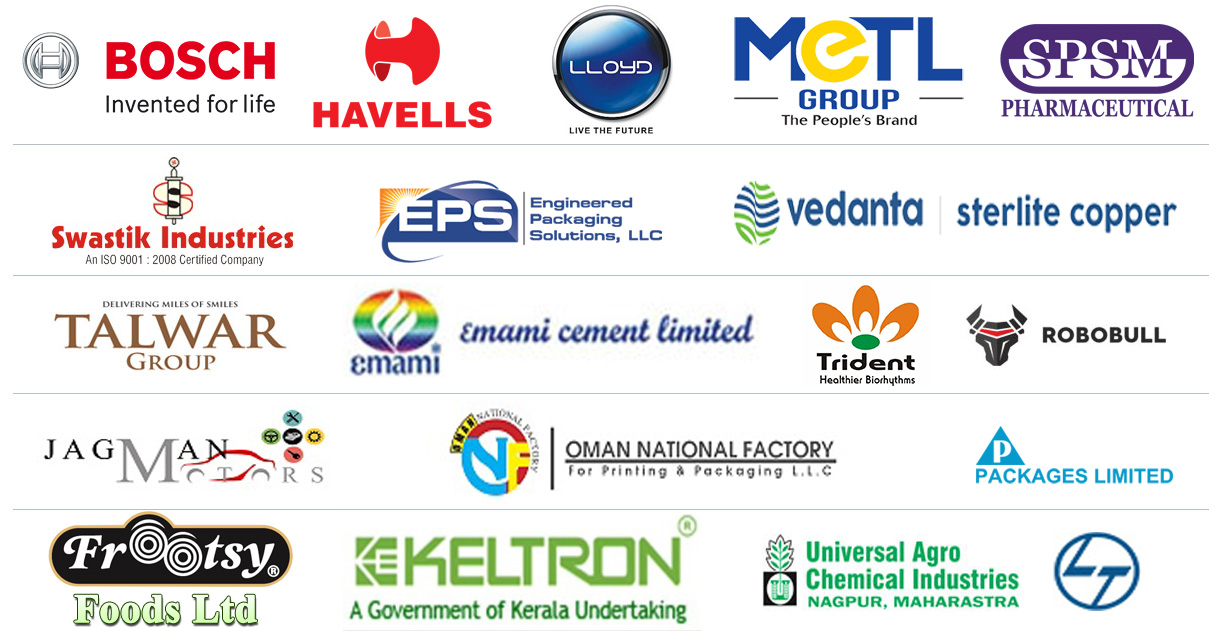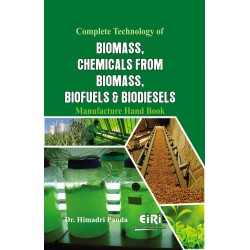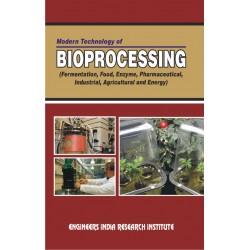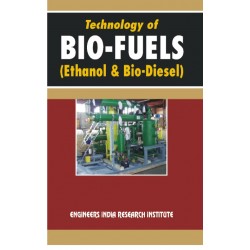Activated Carbon like Activated Carbon from Rice Husk, Straw, Cashew nut Shell, Coir Pitch, Wood Charcoal, Powdered Activated Carbon, Impregnated carbon, Polymers coated, Granula with Project Profiles (Fundamentals, Applications, Chemistry and Synthesis)

- More than 40 years of experience
- Managed by expert industrial consultants
- ISO 9001-2015 Certified
- Registered under MSME, UAM No: DL01E0012000
- 24/5 Research Support
Get your quesries resolved from an industry expert. Ask your queries before report or book purchase. - Custom Research Service
Speak to the our consultant to design an exclusive study to serve your research needs. - Quality Assurance
All reports are prepared by highly qualified consultants & verified by a panel of experts. - Information Security
Your personal & confidential information is safe & secure.
Activated Carbon like Activated Carbon from Rice Husk, Straw, Cashew nut Shell, Coir Pitch, Wood Charcoal, Powdered Activated Carbon, Activated Fuller Earth, Pelleted Activated Carbon (EAC), Impregnated carbon, Polymers coated, Granula with Project Profiles (Fundamentals, Applications, Chemistry and Synthesis)
This book contains chapter on Biomass-based Activated Carbon, Characterization of Activated Carbon, Environmental Applications of Activated Carbons: Synthesis and Applications in Adsorption of Organic Contaminants, Categorization of Activated Carbon, Properties of Activated Carbon, Biochemical Properties of Activated Carbon, Modification of the Properties and Reactivity of Activated Carbon, Medical Applications of AC, Analytical Applications, Agricultural Applications of Activated Carbon, Fuel Storage Applications of Activated Carbon, Industrial Applications of Activated Carbon, Advanced Applications of Activated Carbon: Catalysis and Engineering, Alcoholic Beverage Purification Applications of Activated Carbon, Food Industry Applications of Activated Carbon, SEM and TEM Images of Structures in Activated Carbons, Influence of Activated Carbon on Metallic Corrosion, Mercury Adsorption from Aqueous Solution using Activated Carbons, The Preparation and Application of Activated Carbon for Gas Adsorption, Dielectric Properties of Zinc Chloride-Castor Residue Mixtures at Microwave Frequencies, Activated Carbons from Waste Tyre Pyrolysis: Application, Biochemical Aspects of Activated Carbon, Laboratory Pocedures , Adsorption of Gases and Vapors Laboratory Procedures , Laboratory Adsorption Test Procedure for Carbon Adsorption Systems, Industrial Applications of Activated Carbon, Activated Carbon from Wood Waste/Chips, Activated Carbon (Granular and Powder) from Coconut Shell, Plant Economics of Activated Carbon & Sodium Silicate from Paddy Husk and Caustic Soda, Plant Economics of Activated Carbon (Granular & Powder) from Coconut Shell, Plant Economics of Activated Carbon from Wood Waste/Chips, Plant Economics of Palm Shell Charcoal/Activated Carbon.
Chapter 1
Biomass-based Activated Carbon
- Introduction
- Biomass Pyrolysis and Char Activation
- Feedstock for Pyrolysis
- Types of Pyrolysis
- Biomass Properties
- Heat Value
- Moisture Content
- Composition
- Fuel Size and Density
- Lab-Scale Pyrolysis
- Lab-scale Activation
- Pore Size Distribution
- Generation of Granular Activated Carbon
- Rotary Kiln Reactor for Char Activation
- Activated Carbon Rotary Kiln Working Process
- Activated Carbon Rotary Kiln Advantages
- Composition of Biological Activated Carbon Process
- Application of biological activated carbon process in water treatment
- Textile wastewater
- Petroleum wastewater
- Humus in raw water
- Dyeing wastewater
- Domestic wastewater
- Basic Principles of Biological Activated Carbon Technology
- Basic operational parameters of BAC process
- Application fields and the typical process flow of biological activated carbon technology
- O3-BAC process and the evaluation of ozonation
- Mechanism and characteristics of O3-BAC process
- Effect of ozonation on molecule weight distribution and the molecule structure of organic matters
- Improvement of biochemical properties of organics by ozonation
- Improvement of ozonation on biodegradability of organic matters
Chapter 2
Characterization of Activated Carbon
- Physical and Physico-Chemical Properties
- Structural Properties
- Volumetric Characterization
- Characterization of Activated Carbons
- Determination of the pH of Zero-Point Charge
- Determination of Surface Functional Groups
- Fourier Transform Infrared Spectroscopy
Chapter 3
Environmental Applications of Activated Carbons: Synthesis and Applications in Adsorption of Organic Contaminants
- Introduction
- Production and Product Forms
- Water Treatment
- Design concept for the activated carbon water filter
- Water Treatment With Activated Carbon Filter:
- Waste Water Treatment With Activated Carbon Filter
- Benefits of Activated Carbon Filters in Water Treatment
- Organic Pollutants Removal from water
- Properties of the Organic Matter
- Experimental diagram
- Air and Gas Pollutants Control
- Activated Carbon Used in Air and Gas Purification
- Odor Removal
- VOC Capture
- Gas Filtration
- Air and Gas Treatment
- Soil Pollution Treatment
- Introduction
- The Importance of Activated Carbon in Soil Remediation
- The Application of Activated Carbon in Soil Remediation
- Soil Remediation
- Soil Improvement
- Activated Carbon Selection
Chapter 4
Categorization of Activated Carbon
- Powdered AC (PAC)
- Granular AC (GAC)
- Extruded Activated Carbon (EAC)
- Impregnated Activated Carbon (IAC)
- Polymers Coated Activated Carbon (PCAC)
- Activated Carbon Cloth (ACC)
- Biochar Activated Charcoal (BAC)
Chapter 5
Properties of Activated Carbon
- Iodine Number
- Molasses Number
- Apparent Density
- Hardness/Abrasion Number
- Ash Content
- Carbon Tetrachloride Activity
- Particle Size Distribution
Chapter 6
Biochemical Properties of Activated Carbon
- Biological Regeneration Method
- Benefits of Biological Activity
- Major BAC Process Variables
- Selection of GAC for Biological Treatment
- Biological Support Properties
- Adsorption Properties
- Physical Properties
- Service Life
Chapter 7
Modification of the Properties and Reactivity of Activated Carbon
- Regeneration of AC
- Thermal Regeneration Method
- Wet Oxidation Regeneration Method
- Solvent Regeneration Method
- Electrochemical Regeneration Method
- Catalytic Wet Oxidation Method
- Applications of AC
- Industrial Applications
- Medications
- Analytical Chemistry
- Water Purification
Chapter 8
Medical Applications of AC
- Introduction
- Beginnings of AC in Medicine
- Route of Administration
- Medical Grade AC
- Haemocompatibility of AC
- Palatability of Oral AC
- Wound Healing Using AC
- Intoxication Treatment Using AC
- AC as an Antidote
Chapter 9
Analytical Applications
- Heavy metals Sources
- Removal of heavy metals
- Precipitation Flocculation, Flotation and Chelation Reactions
- Ion Exchange Columns
- Process Steps
- Adsorbent Surface Options
- SAP and CuCl2 Solutions
- Wastewater treatment and heavy metal removal
- Coagulation
- Coagulation and Plocculation Process
- Coagulants and its types
- Mechanism of Coagulation
- Materials and Method
- Heavy Metals Removal from Wastewater
- How Do we Remove Heavy Metals?
- Precipitation
- Hydroxide precipitation
- Advantages of hydroxide precipitation
- Sulfide Precipitation
- Advantages and Disadvantages
- What about Chelant
- Hexavalent Chrome Treatment
- Treatment equipment options
- RO Treatment Equipment
- Heavy Metal Removal with Adsorption
- Advantages of adsorbent
- Commonly use of adsorbent
- what do we need to consider?
- What are the priorities for the customer?
- Problem Statement
- What does solution do?
- Procedures of heavy metal removal
- Result of heavy metal removal by Rice Husk or fly ash
- What is Chromium VI and How it is removed from water?
- Lead in drinking water
- What can we do?
- Wastewater treatment from phosphorus with electromagnetic nano-mill
- Nitrogen Removal in Municipal Wastewater
- Nitrogen Removal from drinking water
- Biological nitrogen removal technology
- Nitrogen Removal using activated sludge treatment
- Copper Removal Using Ion Exchange Resin
- Effective ion exchange resin on copper containing wastewater
- Iron and Manganese Treatment
- Removal of Antibiotics
- Adsorption
- Biological Processes
- Anaerobic treatment of antibiotic wastewater
- Biofilm technology
- Membrane Technology
- Gas Adsorption/Storage
- Physical phenomena
- Powdered activated carbon
- Granular activated carbon
- Mass transfer zone
- Maximizing performance
- Spent activated carbon
Chapter 10
Agricultural Applications of Activated Carbon
- Increases Soil’s Nutrient Holding Capacity
- Increases Water Holding Capacity
- Provides Adsorption of Harmful Substances
- Balancing Soil pH
- Supports Biological Activity
- Benefits of organic liquid fertiliser with activated carbon
- Organic liquid fertiliser
- Activated carbon from agricultural waste
- Selection of raw material depends on seven important criteria
- Factors influence activated carbon characteristics
- Effect of Activating Agent
Chapter 11
Fuel Storage Applications of Activated Carbon
- Methane Storage on Activated Carbon
- Introduction
- Technology Description
- Butane Storage on Activated Carbon
- Spills and Disposal
Chapter 12
Industrial Applications of Activated Carbon
- Water treatment
- Wastewater treatment
- Air Purification
- Organic compound removal
- Managing PFAS
- Applications
- Specifications of activated carbon in pellets
- Manufacturing Process of Coal-Based Activated Carbon
- Carbonization of activated carbon
- Activation of activated carbon
- Post-Treatment of activated carbon
- Applications of activated carbon
Chapter 13
Advanced Applications of Activated Carbon: Catalysis and Engineering
- Applications of Activated Carbon
- Air and Gas
- Mining
- Food and Beverages
- Water Treatment
- Types of Activated Carbon
- Granulated Activated Carbon
- Pelletized Activated Carbon
- Powdered Activated Carbon
- Impregnated Activated Carbon
- Catalytic Activated Carbon
- Various other applications of activated carbon
- The decaffeination of coffee
- Sugar (refined sugar, honey, candies, etc.) discoloration
- The discoloration of alcohol, juice, and vinegar
- Industrial procedures that treat water
- Wastewater treatment
- Air and industrial gas purification
- Cartridge respirators
- Removing odours from closed spaces like kitchens, storage facilities, refrigerators etc.
- Cleansing compressed air
- Medical care for severe poisonings
- Activated charcoal dressings infused with silver are used to treat ulcers, burns, and wounds
- Recovery of valuable metals such as gold, silver and others
- Energy Storage
- Activated Carbons in Energy Storage
- Carbon Nanotubes for Energy Storage
- Graphene for Energy Storage
- Carbon Dioxide (CO2) Capture
- Carbon Nanotubes for CO2 Capture
- AC Modification
- Physical modification method
- Gas modification method
- Microwave modification method
- Chemical modification method
- Oxidation modification method
- Reductive modification method
- Acid-base modified method
- Recommendations for Future Directions
Chapter 14
Alcoholic Beverage Purification Applications of Activated Carbon
- Modified activated carbons BAU-A for alcoholic beverage production
- Modified active carbons with metal ions
- Wine & Vermouth
- Beer & Malternatives
- Vodka, whisky & Rum
- Purification of Carbon Di Oxide
- Importance of activated carbon in the beverage industry
- Definition and Characteristics of Activated Carbon
- Key characteristics of activated carbon
- Types of Activated Carbon Used in the Beverage Industry
- Role of Activated Carbon in Beverage Production
- Filtration and Purification
- Removal of Contaminants and Impurities
- Enhancing Taste and Quality
- Types of Beverages that Benefit from Activated Carbon
- Carbonated Soft Drinks
- Alcoholic Beverages
- Non-Alcoholic Beverages (e.g., Fruit Juices)
- Improved Flavor and Odor
- Consistency in Quality
- Compliance with Regulatory Standards
Chapter 15
Food Industry Applications of Activated Carbon
- Applications of our Activated Carbon Products in the Food Industry
- How does it work?
- Uses for AC
- Fabrication of AC
- Carbonization/Pyrolysis
- Production of pyrolysis chars
- Production of activated carbons by chemical activation
- Gases produced during chemical activation
- Microwave-assisted Activation
- MCAC’s Preparation
- Characterization
- Experiment method
- Design of experiments
- Microscopic structure analysis
- Activated Carbon in Edible Oil Purification
- How Activated Carbon Helps in Filtration
- Removing Pesticides and Contaminants:
- The Versatility of Activated Carbon
- Ensuring Quality and Safety
- Activated Carbon in Oil Refining Application
- Activated carbon for decolorization
- Sugar and Sweetener Industry
- Sugar Decolorization Methods
- Activated Carbon Decolorization Method
- Ion Exchange Resin Method
- The application of activated carbon in the decolorization of sweetener
- Selection of activated carbon
- Activated carbon for decolorization of sweeteners
- Microwave-assisted Activation
- Microwave pyrolysis
- Char production from biomass by microwave pyrolysis
- Production of activated carbon by microwaves
- Alcoholic Beverage Industry
- Applications
- Carbon Dioxide (CO2)
- Distilled Liquors
- Fruit Juices and Concentrates
- Odor Control
- Water
- Wine
- What types of activated carbon work best for spirit filtration?
- Coconut granular activated carbon and molecular sieve
- Granular activated carbon for liquor
- Powder activated carbon for liquor
- How does activated carbon affect spirit taste?
- Removal bitterness
- Remove sediment from low-alcohol liquor
Chapter 16
SEM and TEM Images of Structures in Activated Carbons
- Scanning Electron Microscopy (SEM)
- Physicochemical characterization
- Surface characterization
- Sorption experiments
- Surface analysis
- Transmission electron microscopy
- The Development of Transmission Electron Microscopy
Chapter 17
Influence of Activated Carbon on Metallic Corrosion
- Corrosion and Corrosion Mitigation
- Gravimetric analysis
- Method
- Experimental Procedure
- Corrosion Rate
- Activated Carbon Synthesis and Biogas Filtration
- Activated Carbon Synthesis
- Carbonization
- Biogas Filtration
- Activated Carbon: Fundamentals, Properties and Applications
- Powdered Activated Carbon (PAC)
- Granular Activated Carbon (GAC)
- Extruded Activated Carbon (EAC)
- Additional Types
- Fundamentals
- Properties of Activated Carbon
- Pore Structure
- Hardness/Abrasion
- Adsorptive Properties
- Apparent Density
- Moisture
- Ash Content
- pH Value
- Particle Size
- Activated Carbon Production
- Carbonization
- Activation
- Activated Carbon Reactivation
- Activated Carbon Applications
- Water Purification
- Air Purification
- Metals Recovery
- Food & Beverage
- Medicinal
- Air and Gas
- Mining
- Food and Beverages
- Water Treatment
- Activation
- Reaction of activation
- Gas activation
- Feed stocks for AC
Chapter 18
Mercury Adsorption from Aqueous Solution using Activated Carbons
- Mercury Adsorption
Chapter 19
The Preparation and Application of Activated Carbon for Gas Adsorption
- Introduction
- Corrected value in optimal range p/p0
- Adsorption Isotherms of N2 at 77 K and CO2 at 273 K
- FTIR Spectroscopy
- Determination of Immersion Enthalpy
- Temperature-Programmed Reduction
Chapter 20
Dielectric Properties of Zinc Chloride-Castor Residue Mixtures at Microwave Frequencies
- Introduction
- Composition-Dependent of Dielectric Properties
- Temperature-Dependent of Dielectric Properties
- Dielectric Properties of Char
- Temperature-Dependent Dielectric Measurements
- Experiments
- Samples
- Dielectric Properties of Activated Carbon at 2.498 GHz
- Broadband Coaxial Probe Measurements
- Temperature Dependent Properties of Activated Carbon
Chapter 21
Activated Carbons from Waste Tyre Pyrolysis: Application
- Introduction
- Preparation of waste tyre carbon materials
- Activation of carbon black
- Activation of carbon black (CB) using sulfuric acid and hydrogen peroxide
- Characterization of carbon residues
- Adsorption of Hg using carbon black residues
- Production of Activated Carbon
- Carbonization or Pyrolysis
- Activation
- Applications of Activated Carbon from Waste Tyres
- Wastewater Treatment
- Energy Storage Devices
- Hydrogen Storage
Chapter 22
Biochemical Aspects of AC
- Introduction
- Benefits of Biological Activity
- Major BAC Process Variables
- Biological Activity on Filtration Media
- Selection of GAC for Biological Treatment
- Biological Support Properties
- Adsorption Properties
- Physical Properties
- Application of biological activated carbon process in water treatment
- Textile wastewater
- Petroleum wastewater
- Humus in raw water
- Dyeing wastewater
- Domestic wastewater
- Characteristics of microorganisms and mechanisms of pollutants degradation in BAC filtration
- Immobilization of microorganisms on the carriers
- Intensification and immobilization of dominant biocommunity
- Characteristics of the biocommunity structure and distribution
- Characteristics of strain distribution
- Characteristics of biomass distribution
- Characteristics of biocommunity distribution
Chapter 23
Laboratory Pocedures
- Quality Control Laboratory
- Mass Spectrometry and Laser Analysis Laboratory
- Adsorption Unit
- Purpose
- Procedure
- Fixed Bed Height Determination
- Experimental Procedure
Chapter 24
Adsorption of Gases and Vapors Laboratory Procedures
- Analyzers
- mixSorb S series – breakthrough curve analyzer
- Breakthrough curve analysis with mixSorb L
- Analytical method
- Example
- Adsorption & Porosimetry
- Description
- Adsorption
- Biodegradation
- Condensation
- Oxidation
- Scrubbing
- Applicability
Chapter 25
Laboratory Adsorption Test Procedure for Carbon Adsorption Systems
- Single Bed Carbon Adsorbers
- Standard Features
- Benefits
- How It Works
- Activated Medias
- Dual bed carbon adsorbers
- Standard features
- Benefits
- Applications
- Benefits
- Radial Bed Carbon Adsorbers
- Standard Features
- Applications
- Odor Control Systems
- Air Pollution Control
- Micropore & Mesopore Measurement
- Micropore Measurement
Chapter 26
Industrial Applications of AC
- Introduction
- Water Industry
- Food and Beverage Industry
- Medical Field and Pharmaceutical Industry
- Purification of Gases
- Mineral and Metal Recovery
Chapter 27
Activated Carbon from Wood Waste/Chips
- Materials
- Pyrolysis and Activation Process of Biochar
- Pyrolysis Process of Biomass
- Chemical Activation of the Biochar
- Physical Activation of the Biochar
- Characterisation of the Materials
- Adsorption Studies
- Biomass Carbonization Plant
- Raw materials for biomass carbonization
- Recovery of biological residues
- Biomass carbonization plant
- Carbonization furnace
- Highlights of carbonization Furnace
- Activated carbon regeneration
- Activated carbon regeneration process
- Carbon regeneration kiln
- Technical parameters of rotary kiln design conditions
- Carbon Regeneration
- Thermal regeneration of activated carbon
Chapter 28
Activated Carbon (Granular and Powder) from Coconut Shell
- Application
- Coconut Shell Activated Carbon Manufacturing Process
- Step 1: Raw Material Preparation
- Step 2: Raw Material Carbonization
- Step 3: Carbon Activation
- Step 4: Washing & Drying
- Step 5: Grinding & Screening
- Step 6: Packaging
Chapter 29
Plant Economics of Activated Carbon & Sodium Silicate from Paddy Husk and Caustic Soda
- Plant Economics
- Land & Building
- Plant & Machinery
- Fixed Capital
- Working Capital Requirement/Month
- Total Capital Investment
- Turn Over/Annum
Chapter 30
Plant Economics of Activated Carbon (Granular & Powder) from Coconut Shell
- Plant Economics
- Land & Building
- Plant & Machinery
- Fixed Capital
- Working Capital Requirement/Month
- Total Capital Investment
- Turn Over/Annum
Chapter 31
Plant Economics of Activated Carbon from Wood Waste/Chips
- Plant Economics
- Land & Building
- Plant & Machinery
- Fixed Capital
- Working Capital Requirement/Month
- Total Capital Investment
- Turn Over/Annum
Chapter 32
Plant Economics of Palm Shell Charcoal/Activated Carbon
- Plant Economics
- Land & Building
- Plant & Machinery
- Fixed Capital
- Working Capital Requirement/Month
- Total Capital Investment
- Turn Over/Annum
How to Make Project Report?
Detailed Project Report (DPR) includes Present Market Position and Expected Future Demand, Technology, Manufacturing Process, Investment Opportunity, Plant Economics and Project Financials. comprehensive analysis from industry covering detailed reporting and evaluates the position of the industry by providing insights to the SWOT analysis of the industry.
Each report include Plant Capacity, requirement of Land & Building, Plant & Machinery, Flow Sheet Diagram, Raw Materials detail with suppliers list, Total Capital Investment along with detailed calculation on Rate of Return, Break-Even Analysis and Profitability Analysis. The report also provides a birds eye view of the global industry with details on projected market size and then progresses to evaluate the industry in detail.
We can prepare detailed project report on any industry as per your requirement.
We can also modify the project capacity and project cost as per your requirement. If you are planning to start a business, contact us today.
Detailed Project Report (DPR) gives you access to decisive data such as:
- Market growth drivers
- Factors limiting market growth
- Current market trends
- Market structure
- Key highlights
Overview of key market forces propelling and restraining market growth:
- Up-to-date analyses of market trends and technological improvements
- Pin-point analyses of market competition dynamics to offer you a competitive edge major competitors
- An array of graphics, BEP analysis of major industry segments
- Detailed analyses of industry trends
- A well-defined technological growth with an impact-analysis
- A clear understanding of the competitive landscape and key product segments
Need Customized Project Report?
- Ask for FREE project related details with our consultant/industry expert.
- Share your specific research requirements for customized project report.
- Request for due diligence and consumer centric studies.
- Still haven't found what you're looking for? Speak to our Custom Research Team
About Engineers India Research Institute:
Note: We can also prepare project report on any subject based on your requirement and country. If you need, we can modify the project capacity and project cost based on your requirement.
Our Clients

Our Approach
- Our research reports comprehensively cover Indian markets (can be modified as per your country), present investigation, standpoint and gauge for a time of five years*.
- The market conjectures are produced on the premise of optional research and are cross-accepted through associations with the business players
- We use dependable wellsprings of data and databases. What's more, data from such sources is handled by us and incorporated into the report
Why buy EIRI reports?
- Our project reports include detailed analysis that help to get industry Present Market Position and Expected Future Demand.
- Offer real analysis driving variables for the business and most recent business sector patterns in the business
- This report comprehends the present status of the business by clarifying a complete SWOT examination and investigation of the interest supply circumstance
- Report gives investigation and top to bottom money related correlation of real players/competitors
- The report gives gauges of key parameters which foresees the business execution























